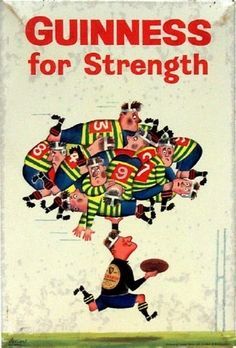
This week we bring you part two of our conditioning series, following last week’s look at the need for rugby players to work on their aerobic conditioning. Today S&C coach TJ looks at why so many get their high intensity training wrong, and one brilliant way to do it right – the hill.
Before we even start, it’s important to point out that these articles are here to be read and used by PLAYERS. Yes, a smart coach could certainly read and implement the ideas and strategies, but sometimes players will have to make physical progress in spite of what their coaches tell/make them do.
Club/School Training vs Your Training
I remember once I had a coach who said that I needed to build my quads up in order to play harder, and that the best way to do this was to STOP squatting and just “find a hill and run up it”.

This in actual fact was horrendous advice from a coach that I’m pretty sure had never lifted a weight in his life, yet had he attempted to, could probably get a 240kg deadlift without any issues. That’s old school for you, folks!
Anyway, the reason it’s important to point out the player-emphasis is because in last week’s article (which I highly advise you read by clicking HERE before going further) I spoke about the importance of aerobic work, and the need for you to do it.
I had a few replies asking if the training they are doing in their club’s preseason is ok.
The majority of the time the answer is – yes! And even if the answer is no, the chances are you’re still going to have to do what the coach says anyway.
In fact a huge reason why I recommended you guys do some aerobic work instead of anaerobic work is because you get through so much anaerobic work in rugby training!
Playing touch, small sided games, skill grids, continuity drills, working on set-piece patterns etc are all going to tax you anaerobically.
So if you’re doing that in your training sessions 1-3 times a week already and then on top of that doing that a bunch of long, medium/high-intensity anaerobic work you’re not going to leave room for much else.
You’re also taxing your capability to recover and perform better when it counts – rugby sessions. Which brings me to my next point.
HIGH, High Intensity work
When people bring up high-intensity training they think about “Tabata” training, circuit training, or some sort of interval where the work and the rest ratio are either the same, or you’re resting for less than you work.
This is NOT considered high intensity when it comes to rugby. Simply put, if you’re not resting for long enough, you wont be able to work hard enough. I know that may be confusing for you if you’re thinking, “If I rest long then the intensity of the session drops”, so let me put it another way.
If you remember last week I posted tables showing the work to rest ratio when it comes to actual rugby games. The minimum work-to-rest ratio of a rugby game is around 1:4, when work includes jogging.
When jogging counts as rest, then you could argue that you’re actually resting for about 95% of the time you spend on the rugby pitch.
But, despite those numbers, you’re probably more tired in a game of rugby than any other activity right? This is because when you are working, it is at a real HIGH intensity, or high-high intensity.
This means that if you are going to train high-intensity work, it needs to be HIGH (are you getting this yet!?) intensity. This work could either be sprint training, sled training (using this treamill drill could work well), or my personal favorite is “the hill”.
The Hill
The obvious step one here is to find a good hill for these sessions. If you think you can’t find a hill and that it’d be just as good putting your treadmill on incline, then I have reason to think you’re lazy. Act like a nerdy kid trying to find Charizard.
The way I structure these sessions with my athletes is to have them perform these from between 10-30 reps of 5-10 seconds, starting out at the lower end and increasing the time and reps as you progress.
As I said a million times already, this is high-intensity work, basically you want to run like a T-rex is chasing you.

If you have a heart-rate (HR) monitor, the goal would be to rest so that when you work, your HR reaches 170 but no higher. If you go above it you’ll have to rest a little bit longer, if you are way below it you’ll cut the rest a little bit shorter.
If you don’t have a HR monitor then you can simply rest for 1 minute, but if you feel like you may see the pearly gates at the end of each sprint then use a longer rest time.
Due to the intense nature of these sessions, I’d only do them once a week (maybe twice if you’re not doing any rugby training), and build up the volume slowly.
A typical (tough!) week could look like this:
Monday – Weights + 30-40 mins aerobic work
Tuesday – Rugby Training
Wednesday – Weights + 15-30 mins aerobic work
Thursday – Rugby Training
Friday – Weights
Saturday – Hill Sprints
Sunday – Netflix n Chill
Now, whether you could fit all of that into your week is up to you. This would also be a period of block where your main training goal is conditioning / energy system development. So whilst the other work may take a back seat for a few weeks, you’ll be thankful later when your conditioning not only allows you to play better rugby, but actually helps you perform in better in the gym too.
As always, any questions or ideas, comment below and I’d be glad to discuss with you.
About TJ JankowskiTJ Jankowski is a former international rugby player for Poland rugby, who achieved their highest world ranking of 23 whilst he was part of the team. Priding himself on a system of coaching and creating plans for people in the real world, not robots, TJ has worked with international rugby players from 4 different continents and we are thrilled to announce that he can help you as part of the Rugbydump Academy. |
|

Sign In